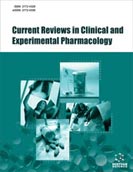Abstract
Background: Probiotics is a broad term used for friendly bacteria which are increasingly used in present scenario due to their wide range of health benefits accompanied by low cost and negligible side effects. The status of the probiotics as a component of food is not clear in the health industry. The use of probiotic bacteria is exploited over-the-counter as dietary supplements or in food products such as yogurt, as well as in the pharmaceutical preparations too. These products have witnessed tremendous growth in the market around the globe. For acceptance of probiotics based products with uniform quality, greater safety of patients, with established scientific evidences for holistic therapeutic benefits in the treatment of various ailments, appropriate drafting and implementation of comprehensive regulatory guidelines is the need of the hour. So in this context, already prescribed guidelines in India are reviewed critically.
Conclusion: This article has been compiled to highlight the variations of food safety standards since 2002 to till date along with the existing ambiguities. Moreover, suggestive consolidations are compiled to take a lead for framing a comprehensive and harmonized guideline to be accepted universally.
Keywords: Probiotics, FSSAI, ICMR, QPS, dietary supplements, PFA Act.
 31
31 6
6




